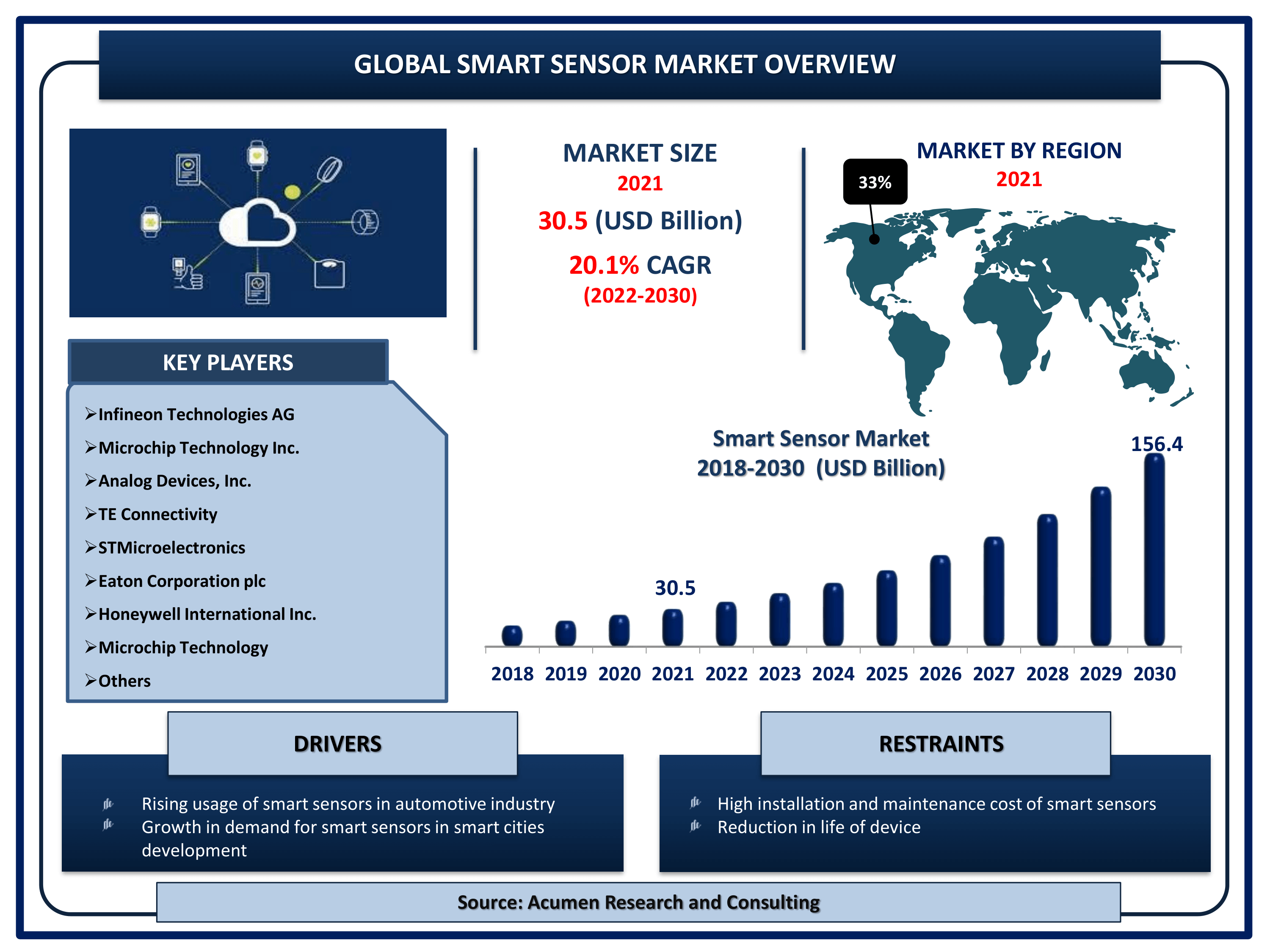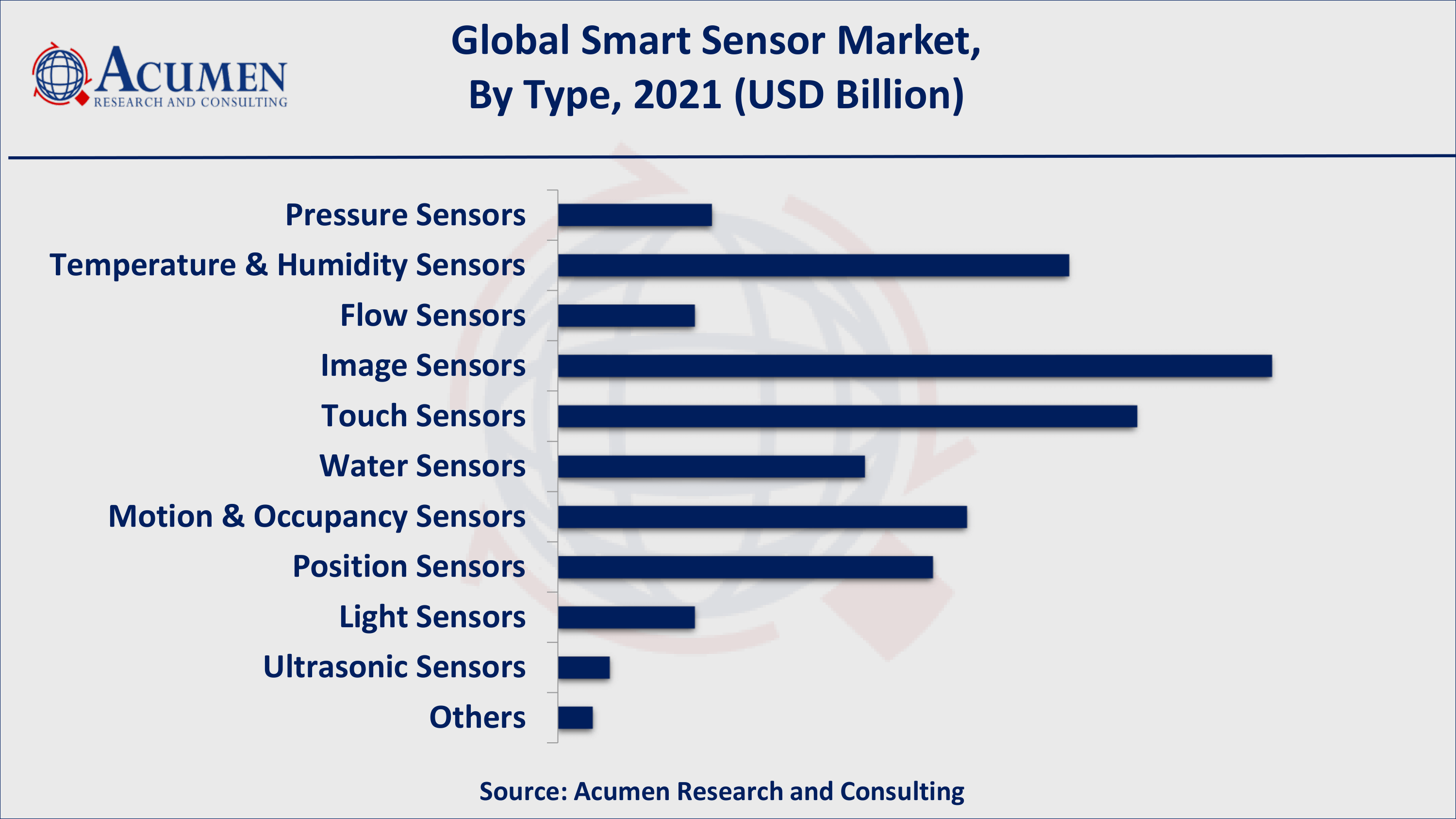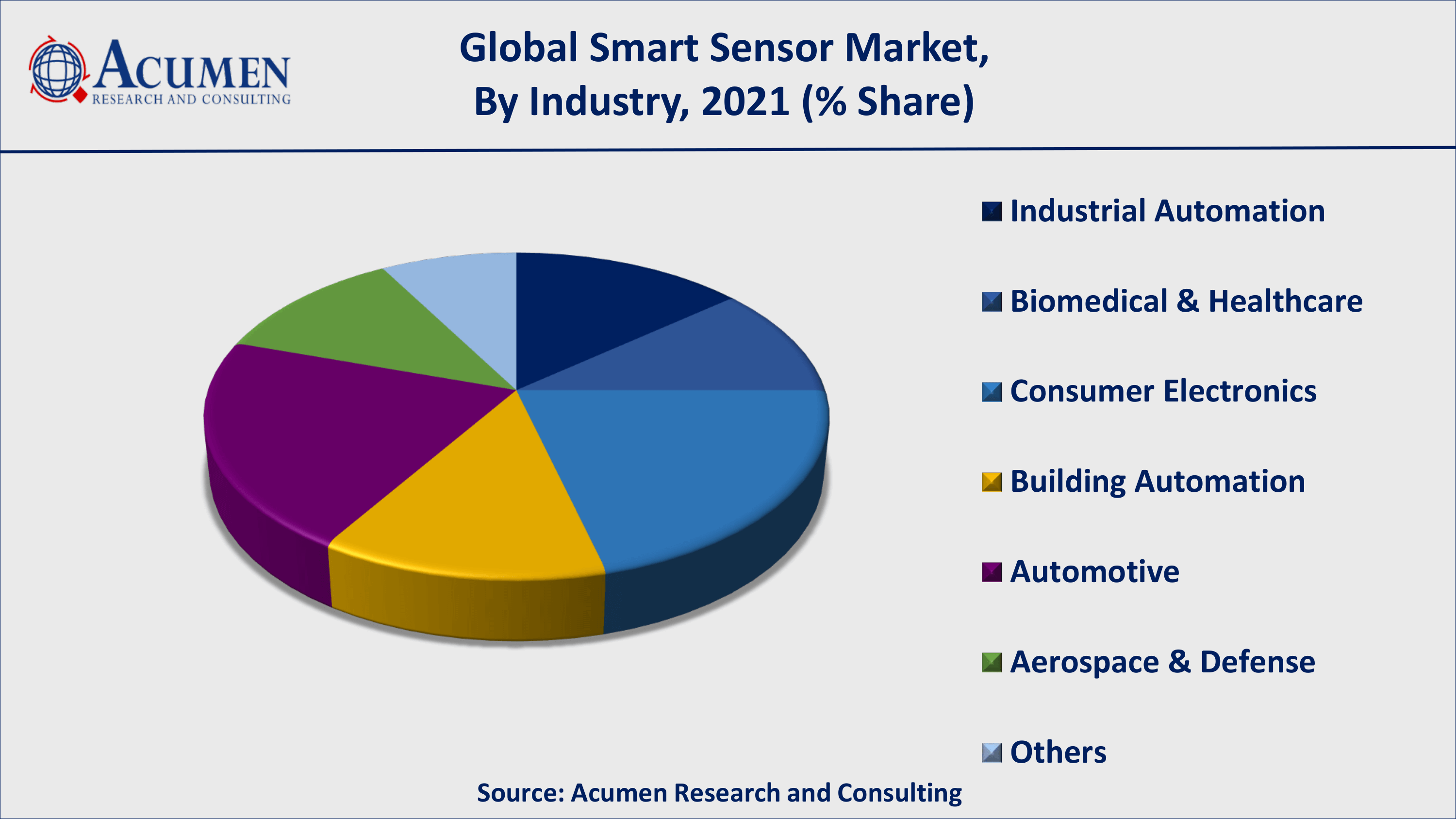October 2018
Smart Sensor Market Size accounted for USD 30.5 Billion in 2021 and is projected to achieve a market size of USD 156.4 Billion by 2030 rising at a CAGR of 20.1% from 2022 to 2030.
The Global Smart Sensor Market Size accounted for USD 30.5 Billion in 2021 and is projected to achieve a market size of USD 156.4 Billion by 2030 rising at a CAGR of 20.1% from 2022 to 2030. According to The Apache ADC Foundation, a smart sensor is a service (run by a built-in DAG) that significantly reduces Airflow infrastructure costs by combining multiple instances of small, lightweight Sensors into a single process. The main idea of the smart sensor service is to improve the efficiency of these long-running tasks by using centralized processes to execute those tasks in batches, rather than using one process for each task.

Smart Sensor Market Report Statistics
COVID-19 has positive impact on smart sensors market
As energy costs continue to rise and environmental concerns persist around the world, there is increasing pressure for increased adoption of energy-saving and cost-effective solutions, particularly in smart buildings and cities. Technology will play a critical role in ensuring the safe return of businesses to their offices, particularly as lockdown restrictions ease. Automation of shared touch points such as door handles, elevators, and sanitary systems is a simple way to limit cross-contamination in shared office space. According to the ADJACENT DIGITAL POLITICS LTD report, technology can also be used to monitor hand soap and sanitizer bottle fill levels, monitor and alarm the mandatory two-meter distance between people using infrared beams, and analyze movement around the office and density in recreational areas using thermal imaging camera systems. Specialized equipment is also being used to take temperature readings of employees and visitors in order to detect high temperatures, which is a key indicator of COVID-19 positivity. Room sensors could be installed in offices to measure humidity and temperature levels and send alerts when the optimal conditions for virus multiplication are met, allowing for preventative measures to be taken.
Global Smart Sensor Market Dynamics
Market Drivers
Market Restraints
Market Opportunities
Smart Sensor Market Report Coverage
| Market | Smart Sensor Market |
| Smart Sensor Market Size 2021 | USD 30.5 Billion |
| Smart Sensor Market Forecast 2030 | USD 156.4 Billion |
| Smart Sensor Market CAGR During 2022 - 2030 | 20.1% |
| Smart Sensor Market Analysis Period | 2018 - 2030 |
| Smart Sensor Market Base Year | 2021 |
| Smart Sensor Market Forecast Data | 2022 - 2030 |
| Segments Covered | By Type, By Component, By Technology, By Industry, By Connectivity, And By Geography |
| Regional Scope | North America, Europe, Asia Pacific, Latin America, and Middle East & Africa |
| Key Companies Profiled | Infineon Technologies AG, Microchip Technology Inc., Analog Devices, Inc., TE Connectivity, STMicroelectronics, Eaton Corporation plc, Honeywell International Inc., Microchip Technology, NXP Semiconductors, Robert Bosch GmbH, and Siemens AG among others. |
| Report Coverage |
Market Trends, Drivers, Restraints, Competitive Analysis, Player Profiling, Regulation Analysis |
Market Dynamics
Smart sensors mean energy savings; R&D has 100% gains in the global market
According to the ACEEE report, smart sensors installed in buildings save energy by automating controls and optimizing systems. This can result in energy savings of 5-15% when smart sensors are installed. Furthermore, smart sensors installed in buildings by incorporating such integrated systems can account for 30-50% of savings in buildings that would otherwise be inefficient. The purchase price, energy savings, and payback time of smart technologies vary depending on the type of technology. BAS installation, for example, is more cost effective when installed in larger buildings. Thus, the wireless capability of smart controls and smart sensors makes them a user-friendly retrofit choice for installation.
Additionally, The DOE Pacific Northwest National Laboratory (PNNL) in 2017 considered a broader set of smart energy efficiency measures, finding that integrating smart sensors and controls throughout the commercial building stock has the potential to save as much as 29% of building energy consumption through high-performance sequencing of operations, optimizing settings based on occupancy patterns, and detecting and diagnosing inadequate equipment operation and installation problems.
Big calls for “smart sensors” in development of smart cities majorly drive the growth of global market
Smart cities are proving to be an excellent model for researching the suitability of sensor-based monitoring instruments. According to a report published by downtoearth.org, smart cities - much-needed platforms for on-field use and evaluation of sensor-based technology - are projects launched in 2015 by the Union Ministry of Housing and Urban Affairs (MoHUA) under the Smart Cities Mission (SCM). Smart sensors improve traffic flow, transportation efficiency, and solid waste collection routes; mobile applications allow citizens to report problems in real time and interact directly with city Microcontroller. Low-cost mobile messaging, telemedicine, and video-consultations improve health outcomes and lower healthcare costs, while self-driving cars and car-sharing platforms relieve pressure on land use according to the statistics released by the OECD 2019. Furthermore, it can have a significant impact on the local job market; for example, new ways of delivering public Microcontroller may provide opportunities for start-ups, Biomedical & Healthcare, and consultancies related to digital innovation, as well as attract skilled workers.
Smart Sensor Market Segmentation
The worldwide smart sensor market is split based on type, component, technology, industry, connectivity, and geography.
According to our smart sensor market forecast, temperature and humidity sensors are expected to grow significantly in the coming years. Temperature sensors that are smart are widely used in measurement control systems and instrumentation. Temperature sensors provide an interpretable temperature reading in a digital format that can be used in a variety of applications including healthcare, automotive, and building automation. Such factors contribute to the expansion of the global intelligent sensors market.
According to the smart sensor industry analysis, consumer electronics is growing at an exponential rate and will continue to do so throughout the forecast period. As consumers become more technologically savvy, the adoption of advanced technology is increasing at a rapid pace. As a result, many smart cities have taken the first step toward installing smart sensors in buildings. With the advancement of technology, it now provides tangible benefits to an ever-increasing consumer base. The installation of such smart sensors is cost-effective, simple to deploy, and requires less maintenance. This outcome will result in significant benefits, including improvements to energy use, hyper-efficiency, and automated operational purposes, resulting in both energy and cost savings.
Smart Sensor Market By Type

Smart Sensor Market By Component
Smart Sensor Market By Technology
Smart Sensor Market By Industry

Smart Sensor Market By Connectivity
Smart Sensor Market Regional Outlook
North America
Europe
Asia-Pacific
Latin America
The Middle East & Africa
Smart Sensor Market Regional Analysis
Asia-Pacific Region to Grow At a Highest CAGR for the Smart Sensor Market
Asia-Pacific is expected to have the fastest growing CAGR and to maintain its dominance throughout the forecast period. Rising technological adoptions, combined with the government's increased emphasis on infrastructure development, will drive demand for smart sensors in this region even higher. India is expected to be the fastest growing market for smart and intelligent sensors in APAC during the forecast period. India is one of the world's fastest developing countries, with the government heavily investing in advanced technologies and smarter infrastructure. With such rapid advancements, sensors in the country are finding widespread use in smart phones, automobiles, and healthcare, among other areas.
Smart Sensor Market Players
The prominent players of the global smart sensor market involve Infineon Technologies AG, Microchip Technology Inc., Analog Devices, Inc., TE Connectivity, STMicroelectronics, Eaton Corporation plc, Honeywell International Inc., Microchip Technology, NXP Semiconductors, Robert Bosch GmbH, and Siemens AG among others.
Looking for discounts, bulk pricing, or custom solutions? Contact us today at sales@acumenresearchandconsulting.com
October 2018
December 2023
June 2021
October 2023